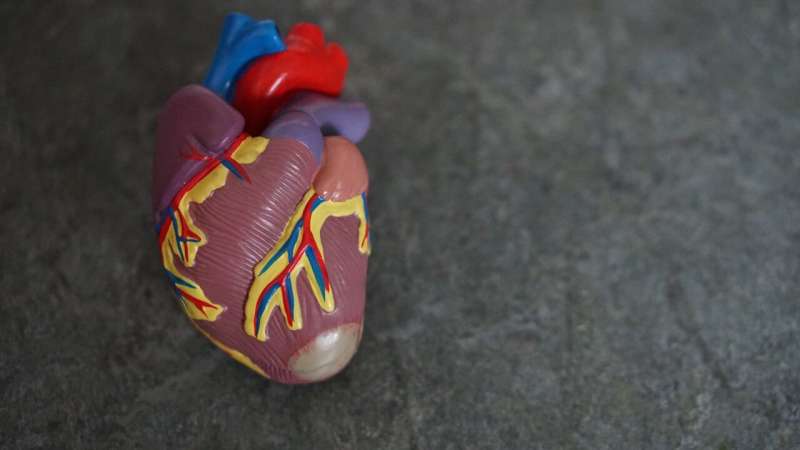Who should receive a device to prevent sudden cardiac death?

Heart images may help to predict the risk of sudden cardiac death in heart attack survivors, according to the largest analysis of cardiac magnetic resonance (CMR) data to date. The late breaking research from the PROFID project is presented at EHRA 2022, a scientific congress of the European Society of Cardiology (ESC).
"Heart attack survivors are selected for an implantable cardioverter defibrillator (ICD) based on their heart's pump function, known as left ventricular ejection fraction," said principal investigator Dr. Nikolaos Dagres. "Many patients who could benefit from a defibrillator do not qualify. On top of that, medical and interventional treatment of myocardial infarction has improved to the extent that very few patients who do qualify for an ICD will ever need it. PROFID aims to develop a risk prediction model and introduce—for the first time—a personalized approach to allocating ICDs."
Sudden cardiac death accounts for approximately one in five fatalities and is usually a result of myocardial infarction. A prophylactic ICD is recommended for patients with an ejection fraction of 35% or lower,2 but most sudden cardiac deaths occur in those with an ejection fraction above 35%.
The investigators previously reported that prediction of sudden cardiac death was poor using ejection fraction alone and remained inadequate after also considering demographics, medical history, medication, clinical characteristics, biomarkers, and electrocardiographic and echocardiographic parameters. Today the researchers report the predictive performance of the model with the addition of CMR imaging measurements.
Two CMR measures potentially relevant to heart attack patients were added to the model. The first was the size of infarct scar, which refers to the area of dead heart muscle after a heart attack. The second was the size of the gray zone, which is the border between infarcted scar area and healthy myocardium containing healthy and dead tissue. Deadly arrhythmias originate from this zone.
The researchers analyzed seven datasets from Europe and the US with a total of 2,104 patients. Participants had 1) previous myocardial infarction regardless of ejection fraction and/or 2) ischaemic cardiomyopathy with ejection fraction below 50%. The average age of participants was 64 years and 1,539 (73%) were men. A total of 421 (20%) patients had an ICD at baseline and 1,683 (80%) did not. The primary outcome, analyzed at 12 months, was appropriate ICD therapy in those with a device and sudden cardiac death or a potentially deadly arrhythmia in those without an ICD.
Preliminary results presented today indicate a potentially relevant role of CMR in risk stratification for sudden cardiac death after myocardial infarction.
Dr. Dagres says that they "will continue to update the model with different combinations of CMR measurements. It will then be used to inform patient selection for ICD treatment in the PROFID-Reduced and PROFID-Preserved trials. Our ultimate goal is to avoid ICD implantation in truly low risk patients and protect those at high risk with an ICD."
PROFID-Reduced will enroll patients with an ejection fraction of 35% or less but with a low predicted individual risk according to the model; they will be randomized to receive an ICD or not. PROFID-Preserved will include patients with an ejection fraction above 35% and a high predicted individual risk according to the model; they will be randomized to ICD versus no ICD.
More information: Conference: www.escardio.org/Congresses-&-Events/EHRA-Congress




















